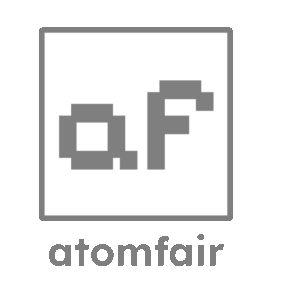Your cart is currently empty!

Atomfair 9H-Carbazole-3-carboxaldehyde, 9-hexyl- C19H21NO CAS 183718-72-1
9-Hexyl-9H-carbazole-3-carbaldehyde (CAS No. 183718-72-1) is a high-purity organic compound with the molecular formula C19H21NO. This carbazole derivative features a hexyl substituent at the 9-position and a formyl group at the 3-position, making it a versatile intermediate for organic synthesis and materials science applications. Its rigid carbazole core and aldehyde functionality enable its use in the development of advanced polymers, OLED materials, and photoactive compounds. With a molecular weight of 279.38 g/mol, this compound is supplied as a crystalline solid with >95% purity (HPLC), ensuring optimal performance in research and industrial processes. Store in a cool, dry place away from light…
Description
9-Hexyl-9H-carbazole-3-carbaldehyde (CAS No. 183718-72-1) is a high-purity organic compound with the molecular formula C19H21NO. This carbazole derivative features a hexyl substituent at the 9-position and a formyl group at the 3-position, making it a versatile intermediate for organic synthesis and materials science applications. Its rigid carbazole core and aldehyde functionality enable its use in the development of advanced polymers, OLED materials, and photoactive compounds. With a molecular weight of 279.38 g/mol, this compound is supplied as a crystalline solid with >95% purity (HPLC), ensuring optimal performance in research and industrial processes. Store in a cool, dry place away from light to maintain stability.
Properties
- CAS Number: 183718-72-1
- Complexity: 342
- IUPAC Name: 9-hexylcarbazole-3-carbaldehyde
- InChI: InChI=1S/C19H21NO/c1-2-3-4-7-12-20-18-9-6-5-8-16(18)17-13-15(14-21)10-11-19(17)20/h5-6,8-11,13-14H,2-4,7,12H2,1H3
- InChI Key: QKWDUHTZIRIELI-UHFFFAOYSA-N
- Exact Mass: 279.162314293
- Molecular Formula: C19H21NO
- Molecular Weight: 279.4
- SMILES: CCCCCCN1C2=C(C=C(C=C2)C=O)C3=CC=CC=C31
- Topological: 22
- Monoisotopic Mass: 279.162314293
- Synonyms: 9H-Carbazole-3-carboxaldehyde, 9-hexyl-, 183718-72-1, DTXSID90476336, DTXCID90427146, 9-Hexyl-9H-carbazole-3-carbaldehyde, 9-HEXYLCARBAZOLE-3-CARBALDEHYDE, 3-Formyl-N-hexylcarbazole, 3-formyl-N-hexyl-carbazole, SCHEMBL8701533, SCHEMBL11838612
Application
9-Hexyl-9H-carbazole-3-carbaldehyde is widely used as a key building block in the synthesis of conjugated polymers for organic electronics, including OLEDs and photovoltaic devices. Its aldehyde group facilitates Schiff base formation and other condensation reactions, enabling the development of novel optoelectronic materials. Researchers also utilize this compound in the design of fluorescent probes and liquid crystalline materials due to its electron-rich carbazole core.
If you are interested or have any questions, please contact us at support@atomfair.com
Disclaimer: Sold exclusively for laboratory research. Prohibited for commercial use, diagnostics, or human/animal applications. Buyers assume all compliance liability.
Disclaimer
Intended Use & Restrictions
This product is sold exclusively for laboratory research, analytical testing, or non-commercial purposes.
- Strictly prohibited: Resale, repackaging, or formulation into commercial products.
- Not approved for human/animal use, diagnostics, or manufacturing (including pharmaceuticals, agrochemicals, or consumer goods).
Patent & Regulatory Compliance
Certain molecules may be protected by active patents or regulatory restrictions.
- Buyers must independently verify patent status (e.g., via USPTO/EPO/CNIPA) and comply with local laws.
- Atomfair LLC does not provide legal assurances regarding patent non-infringement or jurisdictional compliance.
Liability Release
By purchasing, the buyer agrees to:
- Use this product only as permitted by law.
- Indemnify Atomfair LLC against all claims arising from misuse, patent infringement, or regulatory violations.
Only logged in customers who have purchased this product may leave a review.
Related products
-
Atomfair (3-Methoxyphenyl)boronic acid C7H9BO3 CAS 10365-98-7
-
Atomfair (9-Phenyl-9H-carbazol-2-yl)boronic acid C18H14BNO2 CAS 1001911-63-2
-
Atomfair (E)-Ethyl 3-(4,4,5,5-tetramethyl-1,3,2-dioxaborolan-2-yl)acrylate C11H19BO4 CAS 1009307-13-4
-
Atomfair (S)-(-)-1-Benzyl-3-pyrrolidinol C11H15NO CAS 101385-90-4
-
Atomfair (S)-2-(3-((2-isopropylthiazol-4-yl)methyl)-3-methylureido)-4-morpholinobutanoic acid C17H28N4O4S CAS 1004316-92-0

Reviews
There are no reviews yet.